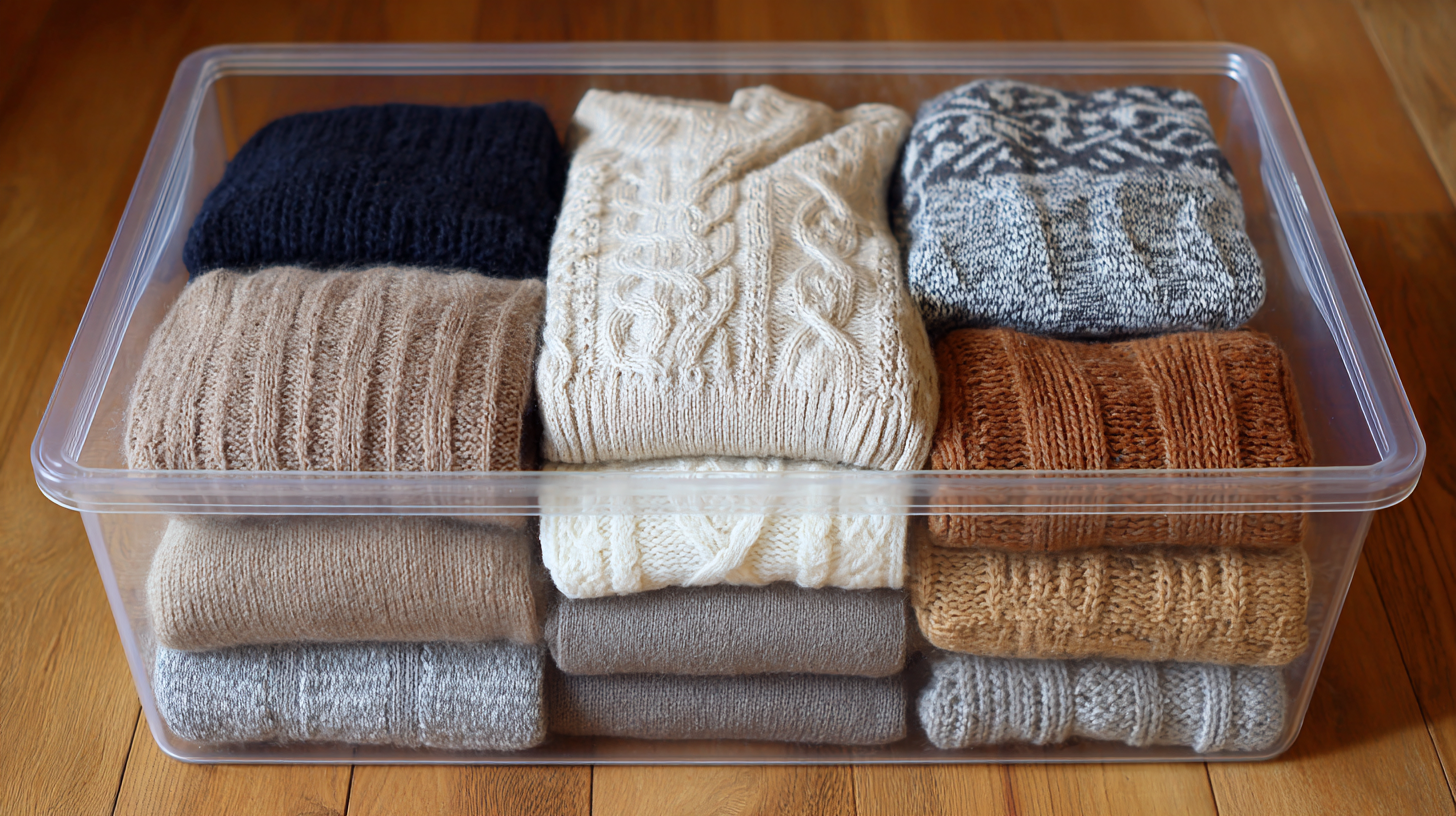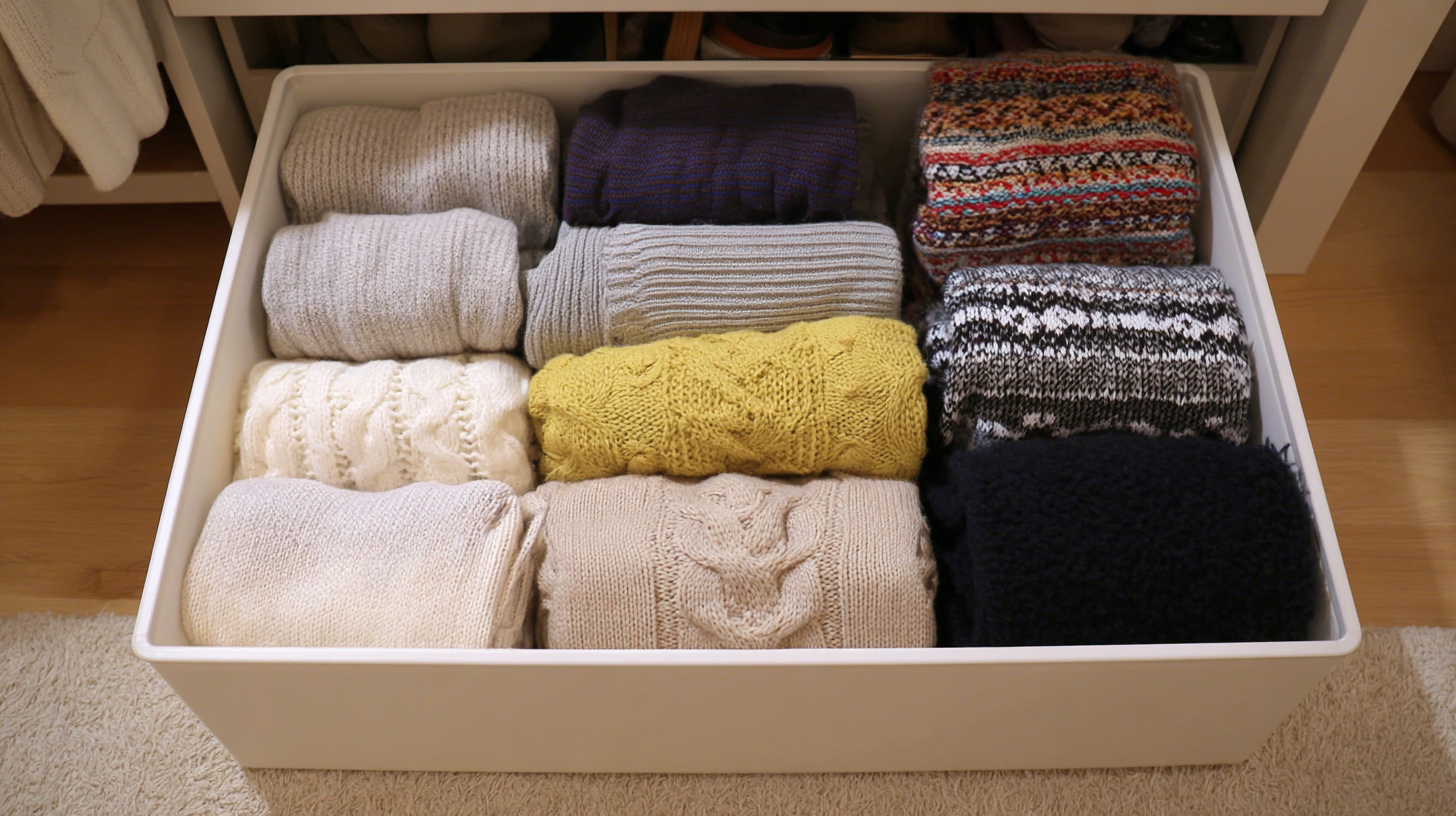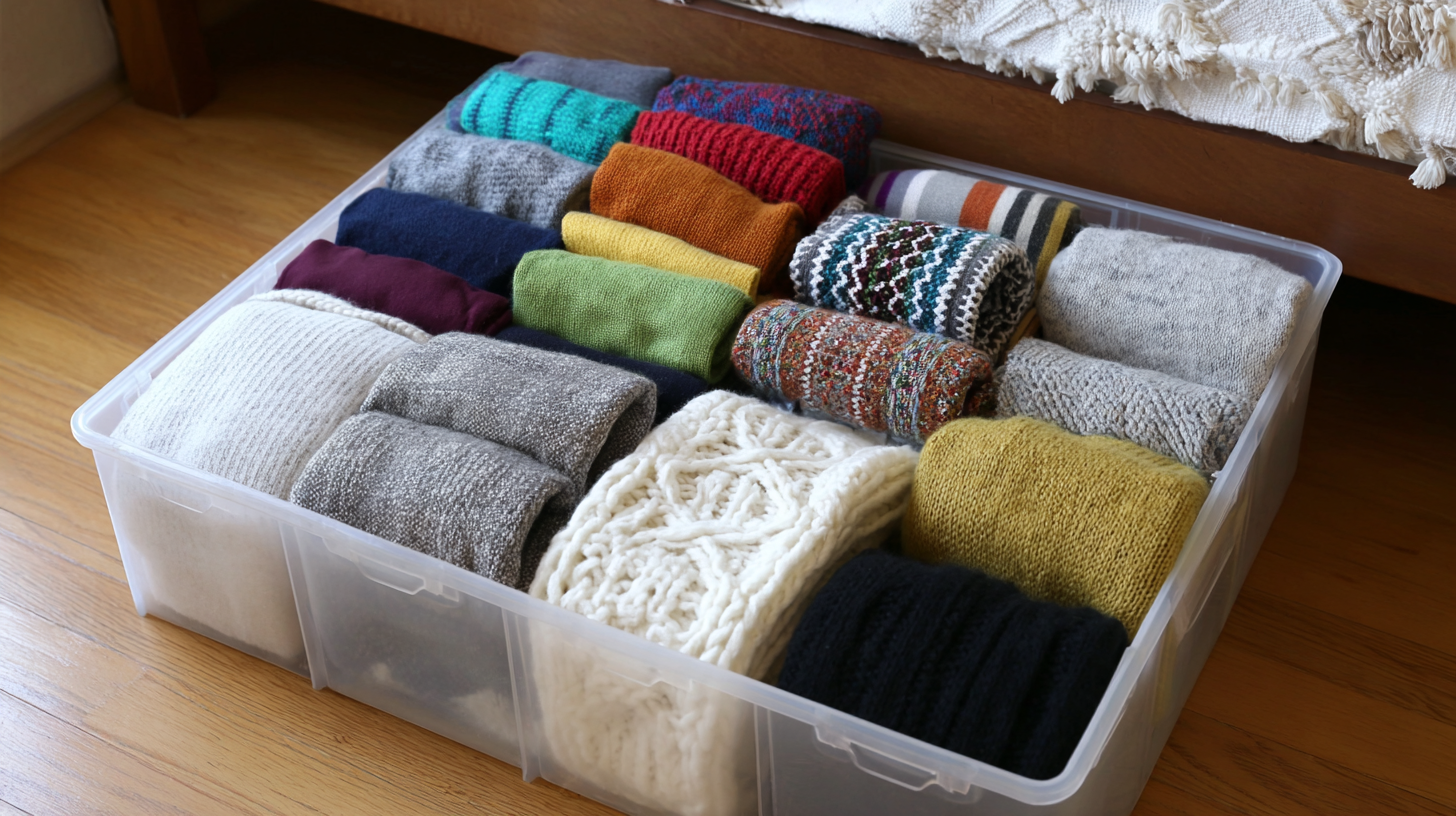As the seasons change, organizing your wardrobe becomes essential to maintain an efficient clothing storage system. According to a recent survey conducted by the American Cleaning Institute, over 75% of consumers find it challenging to keep their closets neat and orderly, particularly when it comes to bulky items like sweaters. A well-organized "Sweater Storage Box" not only saves space but also protects your cherished knitwear from wear and tear, dust, and moths. Industry experts suggest that implementing smart storage solutions can prolong the lifespan of your garments by up to 30%. With an array of options available, understanding how to effectively categorize and store your sweaters can lead to a more streamlined and enjoyable dressing experience. In this blog, we will explore five smart tips to help you organize your sweater storage box efficiently and make the most of your space.

Seasonal sweater rotation is not just an organizational hack; it's a strategy backed by data that can significantly enhance your wardrobe management. According to a 2022 study by the National Cleaners Association, proper clothing storage can extend the life of garments by up to 30%. Storing sweaters based on the changing seasons allows you to protect delicate fibers from wear and tear that can occur in inappropriate conditions. By rotating your collection, you ensure that sweaters are kept in optimal environments, reducing the risk of moth damage and fabric degradation.
Moreover, the practice of seasonal rotation can contribute to better space utilization. A report by the American Closet Association states that nearly 60% of people struggle with closet space management, often resulting in frustration and last-minute purchases. By clearly defining which sweaters are in circulation during a given season, homeowners can streamline their closet use, making it easier to access and enjoy their favorite pieces. A well-organized sweater storage box not only preserves your clothing but promotes a conscious approach to fashion consumption, encouraging individuals to appreciate and wear items they already own.
When it comes to choosing the right storage box for your sweaters, it's essential to consider materials and sizes that cater to both protection and accessibility. According to a recent report by the National Association of Professional Organizers, nearly 60% of people struggle with ineffective storage solutions, which can lead to damaged fabrics and unorganized closets.
Opt for breathable fabric storage bins with sturdy lids to prevent mold and mildew, while also allowing airflow. Boxes made from acid-free materials can also contribute to the longevity of your garments by preventing color fading and fabric degradation.
The size of your storage box is equally crucial. A study conducted by the Home Organization Industry Association revealed that 75% of consumers who invest in appropriately sized bins claim it significantly aids in maintaining an organized space. Larger boxes are suitable for chunky knits, while smaller bins work well for lightweight sweaters.
Consider labeling each box to enhance efficiency further. This way, you can quickly locate the sweater you want without having to rummage through seasonal clothing, keeping your storage system both efficient and streamlined.
When it comes to maximizing space in your sweater storage box, effective folding techniques can make a significant difference. According to the Journal of Textile Research, using the right folding methods can increase storage efficiency by as much as 30%. Traditional methods often lead to crumpling and wasted space, but techniques such as the Marie Kondo folding method, which encourages folding garments into compact rectangles, not only saves space but also makes it easier to see all your sweaters at a glance.

In addition to folding, implementing a vertical storage strategy can optimize every inch of your storage box. A study by the Organization Institute reveals that vertically stored items can lead to 50% more usable space compared to horizontally stacked ones. By standing sweaters upright, you can quickly access any piece you need without disturbing others, thus prolonging their lifespan and maintaining their condition. Adopting these efficient techniques not only transforms the way you store your sweaters but can also decrease the clutter in your closet, allowing you to enjoy a more organized and aesthetically pleasing space.
When it comes to organizing your sweater storage box, labeling and categorizing are crucial steps that can significantly simplify access to your favorite knitwear. Start by sorting your sweaters based on different criteria; you could categorize them by season, color, or type. For example, lightweight cardigans can be grouped separately from thicker, winter sweaters. This not only saves time when searching for a specific piece but also ensures that each sweater is placed in its designated spot, reducing clutter.

Once you’ve sorted your sweaters, invest in some quality labels. You can use stick-on labels or a labeling machine for a more polished look. Clearly mark each section of your storage box to reflect the categories you’ve created. For example, label sections as "Winter", "Spring", or "Casual" and "Formal". This visual aid will make it much easier to sift through your sweaters when you’re in a rush, and it adds a touch of organization that looks great too. By implementing these simple yet effective organizational strategies, accessing your sweaters will become a seamless and enjoyable experience.
When it comes to caring for your beloved sweaters, proper maintenance is key to ensuring they remain in perfect condition season after season. Start by washing your sweaters infrequently, as this helps preserve their shape and fiber integrity. When it’s time for a wash, always opt for a gentle cycle and use cold water to minimize shrinkage. Additionally, choosing a mild detergent formulated for delicate fabrics can prevent harsh chemicals from damaging the fibers.
After washing, how you dry your sweaters matters just as much. Avoid using a dryer, as the heat can lead to pilling and fading. Instead, lay your sweaters flat on a clean, dry towel, reshaping them to their original form. This method helps retain their shape while preventing stretching. Lastly, consider storing your sweaters in breathable cotton bags rather than plastic containers to allow for air circulation, which can prevent unpleasant odors and mold. Regularly check your storage box and rotate your sweaters to ensure even exposure to air, keeping them fresh and protected until you’re ready to wear them again.
| Tip | Description | Maintenance Frequency | Benefits |
|---|---|---|---|
| Fold Instead of Hang | Folding prevents stretching and maintains the shape of sweaters. | Every Storage Season | Retains shape and prevents damage. |
| Use Storage Bags | Storage bags keep dust and moisture away from fabrics. | Every Storage Season | Prevents mold and protects fibers. |
| Label the Boxes | Use labels to identify contents easily. | Every Storage Season | Saves time when searching for specific items. |
| Store in a Cool, Dry Place | Avoid high heat and humidity environments. | Annually | Prevents fabric degradation and loss of elasticity. |
| Regularly Inspect Sweaters | Check for moths, stains, or damage. | Monthly | Maintains condition and catches issues early. |





